- The Threat of Peronosporosis to Garlic Farms
- Causes and Symptoms:
- Impact on Garlic Farms:
- Preventive Measures:
- Research and Collaboration:
- Conclusion:
- Understanding Peronosporosis
- Symptoms
- Management
- An Overview of the Disease
- Factors Contributing to the Spread
- 1. Environmental conditions:
- 2. Infected plant material:
- 3. Fungal spore dissemination:
- 4. Lack of crop rotation:
- 5. Poor sanitation and hygiene:
- Environmental Conditions and Planting Practices
- Influence of Environmental Conditions
- Importance of Proper Planting Practices
- Effects on Garlic Farms
- Economic and Agricultural Impact
- 1. Decreased Garlic Production
- 2. Increased Production Costs
- 3. Market Demand and Price Fluctuations
- 4. Soil Degradation
- 5. Loss of Employment
- 6. Risk to Food Security
- 7. Environmental Consequences
- Urgent Measures for Management
- 1. Crop Rotation
- 2. Good Agricultural Practices
- 3. Early Detection
- 4. Fungicide Application
- 5. Collaborative Research and Knowledge Sharing
- 6. Training Programs
- 7. Government Support
- Preventive and Control Strategies
- Research and Development Efforts
- “Question-Answer”
- What is peronosporosis?
- How does peronosporosis affect garlic farms?
- What are the urgent measures that can be taken to prevent peronosporosis?
- Are there any natural remedies that can help control peronosporosis?
- What are the long-term effects of peronosporosis on garlic farms?
- “Video” Garlic Diseases and Pests 2020
Peronosporosis, a devastating plant disease caused by the fungal pathogen Peronospora destructor, poses a significant threat to garlic farms around the world. With its ability to rapidly spread and infect garlic crops, peronosporosis can lead to significant yield loss and economic damage for farmers.
Garlic, a popular crop known for its culinary and medicinal uses, plays a crucial role in the global agricultural industry. However, the rise of peronosporosis has created a sense of urgency among farmers and researchers who are striving to find effective measures to combat the disease.
The impact of peronosporosis on garlic farms is multifaceted. Not only does it directly affect crop productivity and profitability, but it also has broader implications for food security and the sustainability of garlic production. As the disease spreads, farmers face the risk of losing their livelihoods, while consumers may experience a shortage of garlic in the market.
In order to tackle the peronosporosis threat, urgent measures need to be implemented. Farmers must adopt proactive strategies such as crop rotation, sanitation practices, and the use of resistant garlic varieties. Additionally, early detection and diagnosis methods need to be improved to enable timely intervention and control of the disease.
Scientists and researchers are also exploring the potential of biological control and environmentally-friendly fungicides to manage peronosporosis. By harnessing the power of beneficial microbes and natural compounds, it may be possible to reduce the reliance on chemical pesticides and minimize the environmental impact of disease management practices.
The battle against peronosporosis is far from over, but with the collaboration of farmers, researchers, and policymakers, it is possible to develop sustainable solutions that protect garlic farms and ensure a steady supply of this essential crop for future generations.
The Threat of Peronosporosis to Garlic Farms
Introduction:
Peronosporosis, also known as downy mildew, is a devastating disease that poses a significant threat to garlic farms around the world. This fungal infection can cause severe damage to garlic crops, resulting in reduced yields and financial losses for farmers. Urgent measures need to be taken to prevent the spread of peronosporosis and protect garlic farms from this destructive pathogen.
Causes and Symptoms:
Peronosporosis is caused by the oomycete pathogen Peronospora destructor. The fungus thrives in moist conditions, making garlic farms particularly vulnerable to its spread. The infection typically starts with small, yellow spots on the leaves, which gradually turn brown and die. A white, fuzzy growth may also appear on the underside of the leaves. As the disease progresses, the entire plant can become stunted and eventually die.
Impact on Garlic Farms:
The impact of peronosporosis on garlic farms is significant. Infected plants produce smaller bulbs and reduced yields, leading to financial losses for farmers. The disease can also affect the quality of garlic, making it less marketable. Furthermore, the presence of peronosporosis can lead to a decline in the overall health of garlic farms, as the pathogen weakens the plants and makes them more susceptible to other diseases and pests.
Preventive Measures:
Preventing the spread of peronosporosis requires a combination of proactive measures. Farmers should practice crop rotation, avoiding planting garlic in the same area for consecutive years. This helps disrupt the disease cycle and reduce the risk of infection. Additionally, maintaining good field sanitation by removing infected plants and debris can help prevent the spread of the pathogen. Fungicide treatments may also be used as a preventive measure, but their efficacy can vary.
Research and Collaboration:
Ongoing research into the development of resistant garlic varieties is essential in combating peronosporosis. Collaborative efforts between farmers, scientists, and agricultural organizations can help fund and promote this research. Sharing knowledge and best practices among garlic farmers can also be invaluable in preventing the spread of the disease and minimizing its impact on farms.
Conclusion:
Peronosporosis poses a significant threat to garlic farms, impacting their productivity and financial stability. Urgent measures, including crop rotation, field sanitation, and research into resistant varieties, need to be implemented to prevent the spread of this destructive pathogen. The collaboration and shared knowledge among farmers and researchers play a crucial role in protecting garlic farms from the devastating effects of peronosporosis.
Understanding Peronosporosis
Peronosporosis, also known as downy mildew, is a devastating fungal disease that affects garlic farms worldwide. It is caused by the pathogen Peronospora destructor, which primarily infects garlic plants, but can also affect other members of the Allium family, such as onions and leeks.
Peronosporosis is characterized by the presence of grayish-white, fuzzy growth on the undersides of leaves. This growth is made up of a network of fungal hyphae that produce sporangia, which are responsible for the spread of the disease.
The disease is primarily spread through wind-dispersed spores, which can travel long distances and infect healthy plants. It can also be introduced through infected seeds or contaminated tools and equipment. High humidity, cool temperatures, and wet conditions favor the development and spread of peronosporosis, making it particularly problematic in regions with these climatic conditions.
Symptoms
Early symptoms of peronosporosis include the appearance of yellowish spots or streaks on the leaves of affected plants. As the disease progresses, these spots enlarge and turn brown, eventually leading to the development of the characteristic grayish-white fungal growth on the undersides of leaves.
Other symptoms may include stunting of plant growth, wilting, and eventual death of infected plants. In severe cases, the entire crop can be lost, resulting in significant economic losses for garlic farmers.
Management
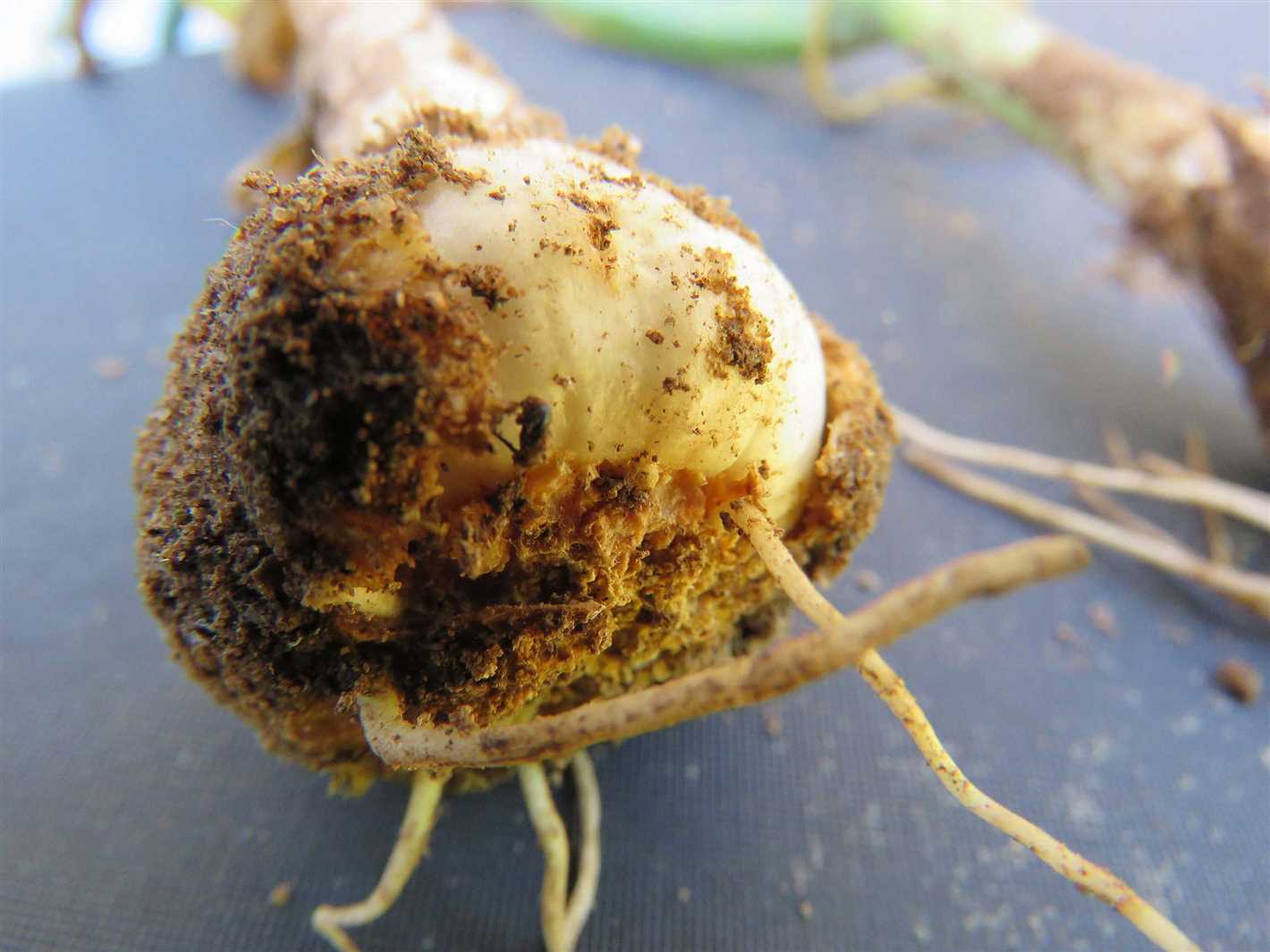
Effective management of peronosporosis involves a combination of cultural, chemical, and biological control methods. These may include:
- Crop rotation: Avoid planting garlic or other Allium crops in the same field for several years to reduce the build-up of the pathogen in the soil.
- Sanitation: Remove and destroy infected plant debris, as the pathogen can survive on these materials and contribute to the spread of the disease.
- Seed treatment: Treat seeds with fungicides or hot water baths to reduce the risk of introducing the pathogen to new plantings.
- Fungicide applications: Use registered fungicides to protect plants from infection. Fungicides should be applied preventively, following label instructions and local regulations.
- Biocontrol agents: Some beneficial microorganisms, such as Bacillus subtilis and Trichoderma spp., have shown potential for controlling peronosporosis. These biocontrol agents can be applied as foliar sprays or incorporated into the soil.
It is important for garlic farmers to monitor their crops regularly for the early detection of peronosporosis. Early intervention and appropriate management strategies can help prevent the spread of the disease and minimize its impact on garlic yields.
An Overview of the Disease
Peronosporosis is a devastating fungal disease that affects garlic crops worldwide. It is caused by the pathogen Peronospora destructor, which thrives in moist and cool conditions. The disease is characterized by the appearance of white mold on the leaves and stems of garlic plants.
Peronosporosis can have severe economic impacts, as it significantly reduces garlic yields and quality. Infected plants often have stunted growth, and the bulbs may become discolored and rot. In severe cases, the disease can lead to complete crop loss.
This pathogen spreads rapidly and can survive in the soil for extended periods, making it difficult to control. It is primarily transmitted through airborne spores and can also spread through contaminated equipment, clothing, or soil. Additionally, water splash and insect vectors can contribute to the disease’s spread.
Once the spores of Peronospora destructor land on a susceptible plant, they germinate and penetrate the tissues, causing infection. The fungus then proliferates and spreads, producing spores that continue the cycle of infection.
Preventing the disease’s establishment and spread is crucial for garlic farmers. This can be achieved through various measures such as crop rotation, limiting irrigation, removing infected plants, and applying fungicides. Timely detection and prompt action are essential for controlling peronosporosis and minimizing its impact on garlic farms.
| Symptom | Description |
|---|---|
| White mold | Fuzzy, white growth on leaves and stems |
| Stunted growth | Plants fail to reach their full potential size |
| Discolored and rotting bulbs | Bulbs may turn yellow or brown and decay |
Factors Contributing to the Spread
Peronosporosis, a disease caused by the fungus-like pathogen Peronospora destructor, poses a significant risk to garlic farms worldwide. Several factors contribute to the spread of this devastating disease:
1. Environmental conditions:
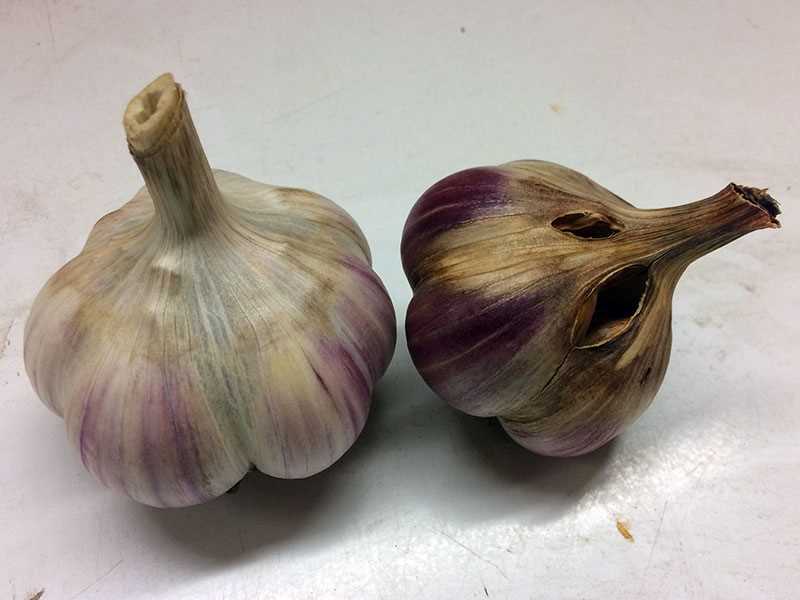
- Damp and humid environments provide favorable conditions for the growth and reproduction of the Peronospora destructor pathogen.
- Rainfall and irrigation can contribute to the spread of the disease by creating moist conditions that facilitate the development and dispersal of spores.
- Cool temperatures, typically between 10°C and 20°C (50°F and 68°F), are optimal for the growth of the pathogen and can further enhance its spread.
2. Infected plant material:
- Infected garlic bulbs, cloves, and plant debris are a major source of inoculum for the disease.
- Limiting the use of infected planting material and removing infected plants from the field is essential to prevent the further spread of the disease.
3. Fungal spore dissemination:
- The Peronospora destructor pathogen produces airborne spores that can be dispersed over short distances by wind.
- Insects, such as aphids and thrips, can also act as vectors, transporting spores from infected to healthy plants.
4. Lack of crop rotation:
Growing garlic continuously in the same field without rotation is a common practice in many garlic farming systems. This lack of crop rotation promotes the buildup of pathogens, including Peronospora destructor, in the soil, leading to increased disease pressure and spread.
5. Poor sanitation and hygiene:
- Improper sanitation practices, such as failure to clean equipment and tools between uses, can contribute to the spread of the disease.
- Contaminated machinery, clothing, and footwear can carry spores from infected fields to healthy ones.
Addressing these factors is crucial to limit the spread of peronosporosis and protect garlic farms from devastating losses. Implementing strict sanitation protocols, practicing crop rotation, and employing disease-resistant garlic varieties can help mitigate the risk and impact of this destructive disease.
Environmental Conditions and Planting Practices
Influence of Environmental Conditions
The development and severity of Peronosporosis in garlic farms is greatly influenced by various environmental conditions. One of the main factors is humidity, with high humidity levels providing favorable conditions for the growth and spread of the pathogen. Regions with frequent rainfall or high atmospheric moisture are particularly susceptible to Peronosporosis outbreaks.
Temperature also plays a significant role in the disease development. Prolonged periods of cool, wet weather create optimal conditions for the pathogen to thrive and infect garlic plants. Conversely, high temperatures and dry conditions can inhibit the growth and spread of Peronosporosis, reducing the disease incidence.
Soil type and drainage are other important factors affecting the disease. Poorly drained soils that retain moisture for extended periods increase the risk of Peronosporosis. Clay soils, for example, can be problematic as they tend to hold water and provide a suitable environment for pathogen proliferation.
Importance of Proper Planting Practices
Implementing appropriate planting practices can help manage and reduce the risk of Peronosporosis in garlic farms. One key aspect is the selection of disease-resistant garlic cultivars. Certain garlic varieties show more resistance to Peronosporosis, and growers should opt for these varieties when planting.
Spacing between garlic plants is also crucial in preventing the spread of Peronosporosis. Adequate spacing promotes good air circulation, which can limit the growth and dissemination of the pathogen. Moreover, proper spacing allows for easier monitoring and management of the crop, as well as better access for spraying fungicides if necessary.
Crop rotation is another beneficial practice to consider. Avoiding the continuous planting of garlic in the same field can help break the disease cycle. The rotation of garlic with non-host crops, such as legumes or cereals, can disrupt the pathogen’s survival and reduce the spread of Peronosporosis.
Overall, creating a favorable environment for garlic plants and implementing proper planting practices are essential in minimizing the risk of Peronosporosis. By considering the influence of environmental conditions and adopting appropriate techniques, garlic farmers can effectively manage the disease and protect their crops.
Effects on Garlic Farms
1. Decreased Garlic Production:
Peronosporosis, also known as downy mildew, is a devastating disease that affects garlic farms. This fungal-like pathogen thrives in humid and wet conditions, making garlic fields an ideal breeding ground. As a result, infected crops experience reduced yields, leading to decreased garlic production on affected farms.
2. Financial Losses:
Garlic farms heavily rely on their annual harvest for income. With the introduction of peronosporosis, garlic farmers are facing significant financial losses. The decrease in garlic production results in a decrease in revenue, impacting the overall profitability of garlic farms. Farmers invest time, effort, and resources into garlic cultivation, making it essential to find urgent measures to combat peronosporosis.
3. Increased Production Costs:
The presence of peronosporosis on garlic farms leads to increased production costs. Farmers need to invest in disease management strategies, such as fungicides, crop rotation, and other preventive measures, to contain the spread of the disease. These additional costs can burden garlic farmers, especially smaller-scale operations, and may have long-term implications for the sustainability of their farms.
4. Environmental Impact:
Peronosporosis not only affects garlic farms economically but also has environmental consequences. The increased use of fungicides and other disease management methods can lead to pollution of water sources and soil degradation. Additionally, the destruction of infected garlic plants can disrupt the local ecosystem and reduce biodiversity in the area.
5. Potential Disruption of Supply:
The decrease in garlic production due to peronosporosis can have wider implications for the supply of garlic in the market. If a significant number of garlic farms are affected, there may be a shortage of garlic available for consumers. This can lead to price increases and limited availability of garlic products, affecting both consumers and businesses reliant on garlic as a key ingredient.
| Effects on Garlic Farms |
|---|
| Decreased Garlic Production |
| Financial Losses |
| Increased Production Costs |
| Environmental Impact |
| Potential Disruption of Supply |
Economic and Agricultural Impact
The spread of peronosporosis in garlic farms has had significant economic and agricultural impacts. This fungal disease affects the entire garlic plant and can cause a range of negative effects.
1. Decreased Garlic Production
Peronosporosis leads to a significant decrease in garlic production. The disease affects both the quality and yield of garlic bulbs, resulting in smaller and fewer harvests. This directly affects the income of garlic farmers and can lead to financial losses.
2. Increased Production Costs
In order to control and manage peronosporosis, garlic farmers must invest in various preventive and control measures. These include the use of fungicides, crop rotation, and increased labor for monitoring and disease management. These additional costs can strain the financial resources of farmers and reduce their profitability.
3. Market Demand and Price Fluctuations
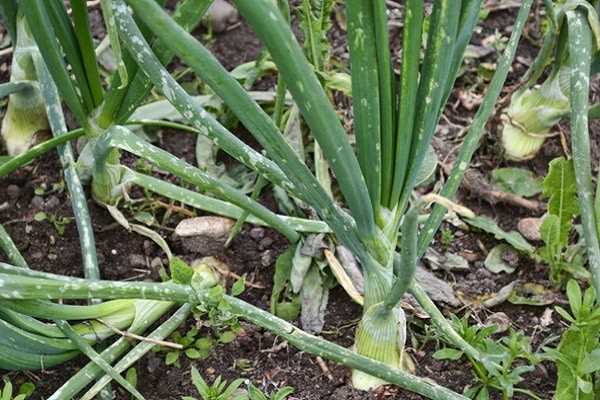
With a decrease in garlic production, there is a potential for fluctuations in market demand and prices. If the supply of garlic is significantly reduced due to peronosporosis, the market may experience higher prices. On the other hand, if farmers compensate for the reduced production by increasing prices, consumers may shift to alternative products. These market dynamics can impact both farmers and consumers.
4. Soil Degradation
The persistence of peronosporosis in garlic farms can lead to soil degradation. Infected plants and fallen leaves can contribute to the buildup of pathogens and decrease soil fertility. This can further impact future garlic crops, requiring farmers to invest in soil remediation practices.
5. Loss of Employment
The decrease in garlic production and the economic strain on garlic farmers can lead to a loss of employment opportunities in the garlic farming sector. This can have a negative impact on local communities that depend on garlic farming for their livelihoods.
6. Risk to Food Security
Peronosporosis poses a risk to food security as garlic is an important dietary component and flavoring ingredient in many cuisines. A decrease in garlic production due to the disease can impact the availability and affordability of garlic for consumers.
7. Environmental Consequences
The use of chemical fungicides to control peronosporosis can have negative environmental consequences. These chemicals can leach into soil, water, and air, potentially harming other organisms and ecosystems. Sustainable and environmentally friendly management strategies need to be developed to mitigate these risks.
In conclusion, peronosporosis has a wide-ranging impact on garlic farms, affecting both the economic viability of farming operations and the overall agricultural sector. Urgent measures are needed to address this disease, protect garlic crops, and support garlic farmers.
Urgent Measures for Management
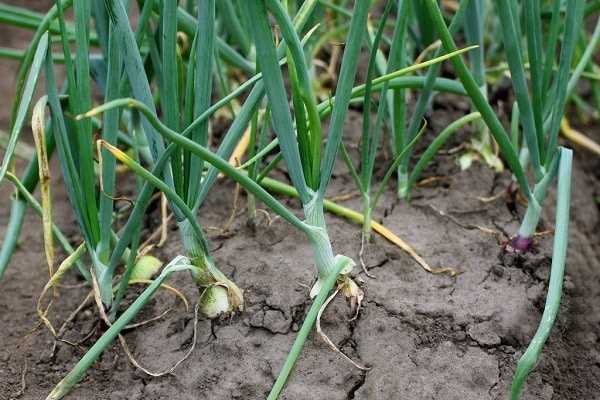
In order to effectively manage the peronosporosis outbreak in garlic farms, urgent measures need to be implemented. These measures should focus on prevention, early detection, and effective control of the disease.
1. Crop Rotation
One of the key measures for managing peronosporosis is crop rotation. This involves alternating the planting of garlic with other non-host crops for a certain period of time. By doing so, the pathogen is deprived of a suitable host and its population is reduced, thus helping to control the disease.
2. Good Agricultural Practices
Implementing good agricultural practices is essential for managing peronosporosis. This includes proper sanitation, such as cleaning and disinfecting farming equipment and tools to prevent the spread of the pathogen. Farmers should also practice proper irrigation management to avoid creating favorable conditions for the disease to thrive.
3. Early Detection
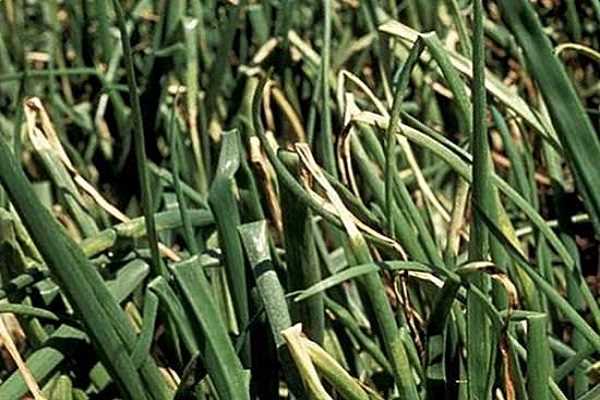
Early detection is crucial for preventing the spread of peronosporosis. Farmers should regularly inspect their garlic crops for any signs or symptoms of the disease, such as yellowing or wilting leaves. Infected plants should be promptly removed and destroyed to prevent the disease from spreading to healthy plants.
4. Fungicide Application
When peronosporosis is detected, timely application of appropriate fungicides can help in controlling the disease. Farmers should consult with agricultural experts to identify the most effective fungicides for managing peronosporosis and follow the recommended application rates and timings.
5. Collaborative Research and Knowledge Sharing
Collaborative research efforts and knowledge sharing among garlic farmers, agricultural experts, and researchers can play a significant role in managing peronosporosis. Sharing information on best practices, new technologies, and disease management strategies can help in developing effective management plans.
6. Training Programs
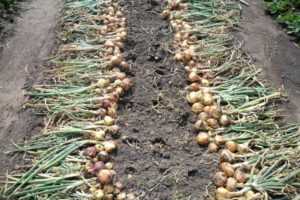
Organizing training programs for garlic farmers on peronosporosis management can enhance their knowledge and skills in disease prevention and control. These programs can educate farmers on the importance of implementing preventive measures and provide them with hands-on training in disease identification and control methods.
7. Government Support
Government support is crucial for the effective management of peronosporosis. Governments should allocate resources for research and development, provide financial assistance to affected farmers, and establish regulatory frameworks to ensure the implementation of disease management measures.
By implementing these urgent measures for peronosporosis management, garlic farms can effectively control the spread of the disease and minimize its impact on crop yield and quality.
Preventive and Control Strategies
1. Crop rotation: Rotating garlic crops with non-host plants can help prevent the buildup of the Peronosporosis pathogen in the soil. This practice reduces the risk of infection and spread of the disease.
2. Sanitation: Implementing strict sanitation measures in the garlic farm is crucial for disease control. This includes removing and destroying infected plants, properly disposing of plant debris, and regularly cleaning and disinfecting equipment used in the field.
3. Fungicide application: Fungicides can be used as a preventive measure to protect healthy garlic plants from Peronosporosis. Regular application of fungicides can help reduce the severity of the disease and prevent its spread.
4. Genetic resistance: Developing garlic varieties that are resistant to Peronosporosis can be an effective long-term solution for disease control. Breeding programs can focus on selecting and breeding garlic cultivars with resistance to the pathogen.
5. Good farming practices: Implementing good farming practices, such as proper irrigation management, balanced nutrient application, and proper spacing between plants, can help promote healthier garlic plants and reduce their susceptibility to Peronosporosis.
6. Early detection and monitoring: Regularly monitoring garlic crops for signs and symptoms of Peronosporosis is crucial for early detection and immediate action. Promptly identifying infected plants can help prevent the spread of the disease to the entire crop.
7. Pest control: Managing other pests and diseases in the garlic farm can indirectly contribute to Peronosporosis control. Some pests can weaken garlic plants, making them more susceptible to Peronosporosis, so effective pest control measures are necessary.
8. Training and education: Providing training and educational resources to garlic farmers about Peronosporosis and its control strategies can help promote better disease management practices. Farmers should be aware of the symptoms, prevention methods, and control options available.
9. Collaboration and information sharing: Encouraging collaboration between garlic farmers, researchers, and extension services is essential for exchanging knowledge and experiences regarding Peronosporosis control. Sharing information can help identify the most effective strategies and promote their adoption across farms.
10. Government support: Governments should provide support to garlic farmers by funding research on Peronosporosis control, implementing regulations and policies to prevent the introduction and spread of the disease, and offering financial assistance or incentives for farmers implementing effective disease management practices.
Research and Development Efforts
1. Identifying resistant garlic varieties:
Scientists and researchers are actively working on identifying garlic varieties that are resistant to peronosporosis. Through breeding programs and genetic studies, they aim to develop garlic varieties that can withstand the disease and reduce the impact on garlic farms. These efforts involve evaluating different garlic cultivars and selecting the ones with the highest resistance.
2. Developing effective fungicides:
Research is being conducted to develop and improve fungicides that can effectively control peronosporosis. Scientists are investigating novel chemical compounds and exploring their efficacy in fighting the pathogen responsible for the disease. The goal is to identify safe and affordable fungicides that can easily be applied to garlic crops and provide long-lasting protection.
3. Implementing cultural practices:
Studies are also being conducted to identify cultural practices that can help manage peronosporosis. This includes techniques such as crop rotation, proper irrigation and drainage management, and maintaining optimal planting densities. By understanding the environmental factors that contribute to the disease, farmers can modify their practices to reduce its incidence and severity.
4. Enhancing diagnostic methods:
Efforts are underway to develop more accurate and rapid diagnostic methods for peronosporosis. This includes the use of molecular techniques to detect the pathogen early on and differentiate it from other similar diseases. By improving diagnostic capabilities, farmers can quickly identify affected plants and take appropriate action to prevent further spread.
5. Sharing knowledge and collaboration:
Collaboration between scientists, researchers, and farmers is crucial in combatting peronosporosis. Efforts are being made to share knowledge, best practices, and research findings through conferences, workshops, and online platforms. This allows stakeholders to stay updated on the latest advancements and collectively work towards finding effective solutions for the disease.
| Efforts | Description |
|---|---|
| Identifying resistant garlic varieties | Selection and breeding of garlic cultivars with high resistance to peronosporosis |
| Developing effective fungicides | Researching and improving fungicides for controlling the pathogen causing peronosporosis |
| Implementing cultural practices | Identifying agricultural practices that reduce the incidence and severity of the disease |
| Enhancing diagnostic methods | Developing accurate and rapid diagnostic techniques for early detection and differentiation |
| Sharing knowledge and collaboration | Facilitating communication and collaboration between stakeholders for collective action |
“Question-Answer”
What is peronosporosis?
Peronosporosis is a fungal disease that affects garlic plants and can cause significant damage to garlic farms. It is caused by the pathogen Peronospora destructor.
How does peronosporosis affect garlic farms?
Peronosporosis can lead to yellowing and wilting of garlic leaves, reduced bulb size and quality, and even complete crop loss. It spreads quickly through spores and can quickly devastate entire garlic fields.
What are the urgent measures that can be taken to prevent peronosporosis?
There are several urgent measures that garlic farmers can take to prevent peronosporosis. These include practicing crop rotation, using disease-resistant garlic varieties, applying fungicides, practicing proper irrigation and drainage techniques, and removing infected plants promptly.
Are there any natural remedies that can help control peronosporosis?
Yes, there are some natural remedies that can help control peronosporosis. These include using biofungicides containing beneficial microorganisms, such as Trichoderma spp., and applying organic fungicides, such as copper-based products. However, it is important to note that these remedies may not provide complete control and should be used in conjunction with other preventive measures.
What are the long-term effects of peronosporosis on garlic farms?
The long-term effects of peronosporosis on garlic farms can be devastating. Constant outbreaks of the disease can lead to decreased garlic yields, increased production costs due to the need for fungicide applications, and even the abandonment of garlic farming in some areas. It is crucial for garlic farmers to take urgent measures to prevent the spread of peronosporosis and protect their crops.







